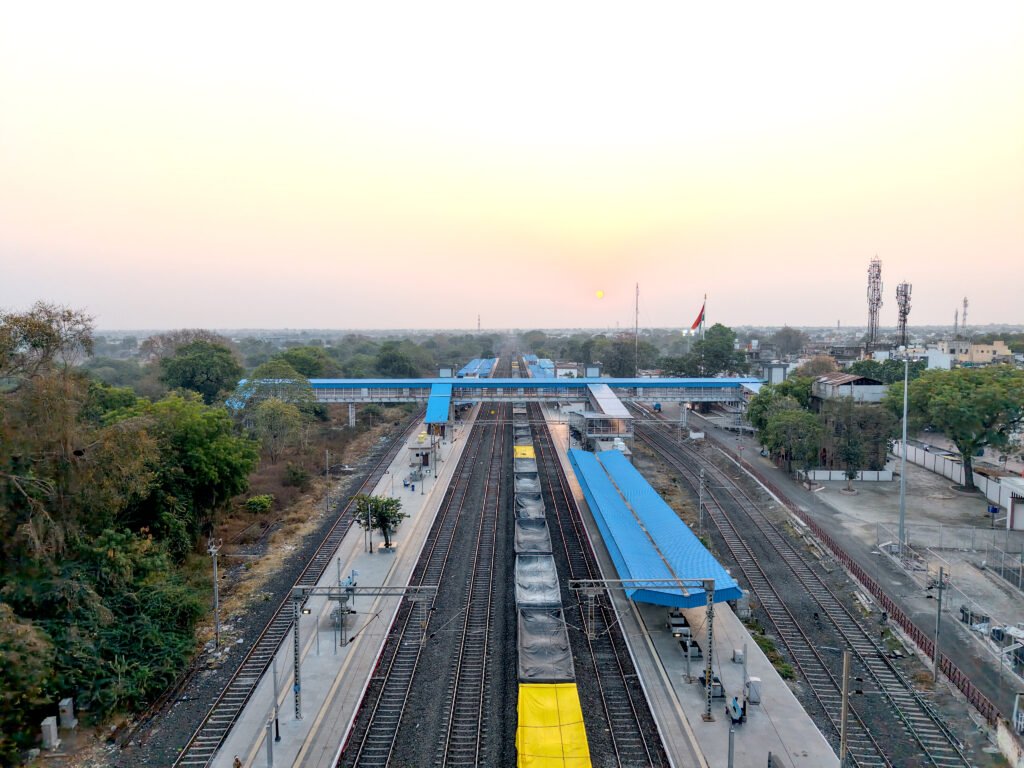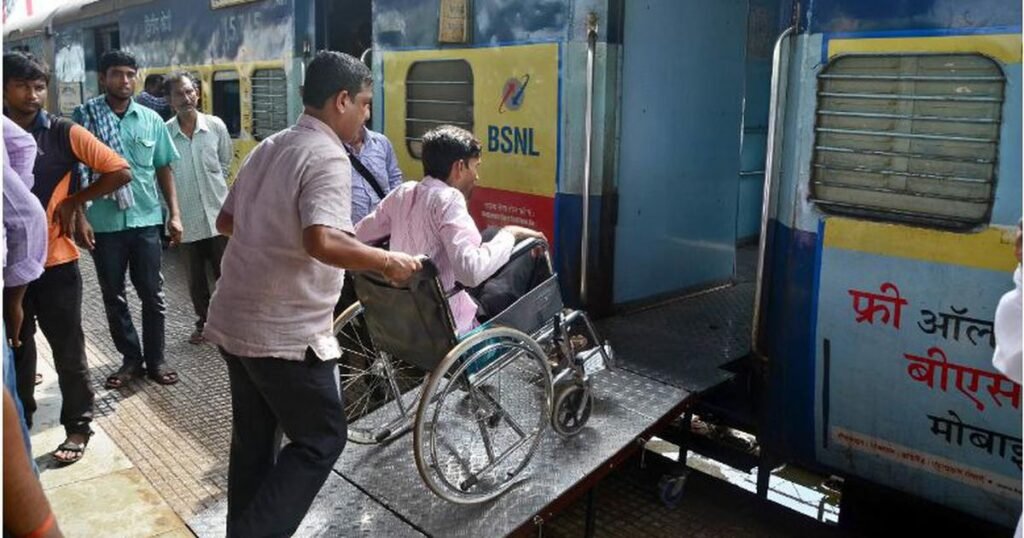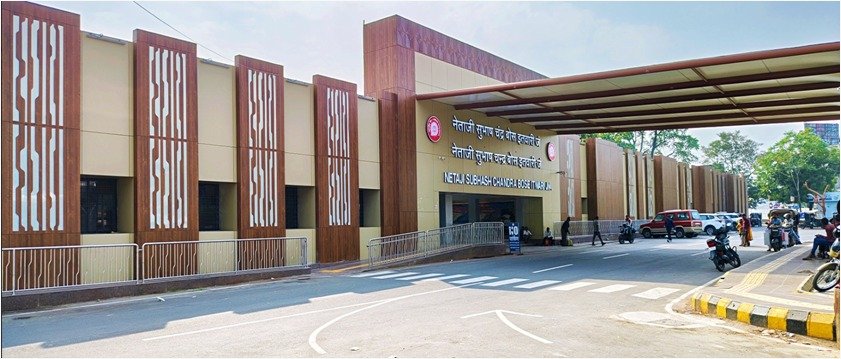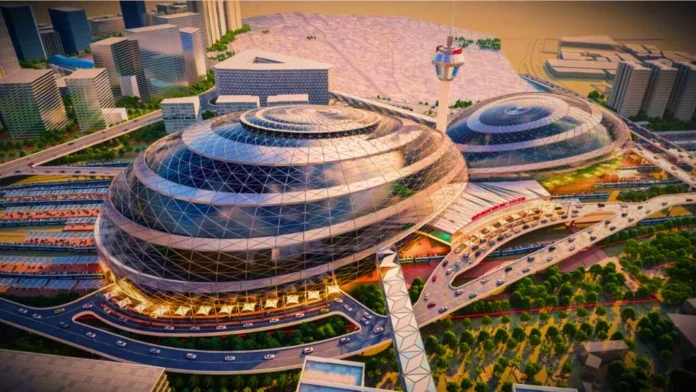Introduction
Indian Railways, the backbone of India’s transportation infrastructure is the fourth largest railway network in India. Indian Railways serves billions of passengers annually and is a crucial part of India’s transportation infrastructure. Indian Railways not only supports the mobility of millions of passengers daily but also facilitates the movement of goods, contributing majorly to the economic growth of the country.
The Indian Railways network is expanding rapidly with new lines, doubling and tripling of existing routes, as well as electrification projects to enhance capacity and efficiency. In recent years, Indian Railways has embarked on an ambitious journey of modernization and expansion to meet the demands of a fast-growing economy and an increasing population.This transformation includes the adoption of advanced technologies, improved safety measures, sustainable practices such as large-scale electrification, and the introduction of modern rolling stock.

Not only this, Indian Railways recognised the importance of station infrastructure as part of the passenger experience. In response, a series of comprehensive station redevelopment initiatives were introduced by Indian Railways. The Railways launched numerous schemes for station redevelopment which represents a profound and strategic shift in India’s approach to its vast rail infrastructure.
This article explores the transformative journey of station redevelopment in India, analyzing its objectives and its long-term impact on the nation’s rail infrastructure and passenger experience.
Key Initiatives by Indian Railways for Redeveloping Stations
Indian Railways has launched several key initiatives to revamp railway stations across the country, aimed at modernizing infrastructure and enhancing passenger experience.
- Model Station Scheme: The Model Station Scheme was an initiative of Indian Railways that operated from 1999 to 2008, under which 594 railway stations were identified and upgraded with enhanced passenger amenities.
- ‘Adarsh’ Station Scheme: Launched in 2009-10, the Adarsh Station Scheme was an initiative by the Ministry of Railways which aimed at upgrading and modernizing railway stations. Around 1253 stations were identified and redeveloped under this scheme.
- Rani Kamalapati & Gandhinagar Station Redevelopment: In 2021, Gandhinagar became the first railway station in India to undergo comprehensive modernization. Later in the same year, Rani Kamalapati Railway Station, formerly known as Habibganj, was also revamped with a completely new look and upgraded passenger amenities.

- Amrit Bharat Station Scheme: The Amrit Bharat Station Scheme, launched by the Ministry of Railways in December 2022, aims to redevelop more than 1300 railway stations across India. So far, 105 stations have been redeveloped under the Amrit Bharat Station Scheme.
Station Revamping : A New Paradigm for India’s Rail Infrastructure
The redevelopment of railway stations in India represents a new paradigm for the country’s rail network, where stations are being transformed from mere transit points into modern, integrated urban hubs. The recently launched Amrit Bharat Station Scheme aims to redevelop and modernize over 1,300 railway stations across India with the primary objective of elevating the passenger experience to modern standards. This scheme adopts a phased and need-based approach, tailoring redevelopment plans according to the unique requirements and potential of each station.
The Rail Land Development Authority (RLDA), a statutory authority under the Ministry of Railways, has also been entrusted with the redevelopment of railway stations under this scheme. RLDA is responsible for planning, developing, and executing the redevelopment of railway stations to transform them into modern, world-class transport hubs. This includes upgrading station infrastructure, improving passenger amenities, and enhancing urban connectivity.

Amrit Bharat Station Scheme: Modernizing India’s Railway Stations
The Amrit Bharat Station Scheme, launched by the Ministry of Railways in December 2022, aims to redevelop 1,337 railway stations across India. This ambitious initiative seeks to transform these stations into modern, integrated transport hubs that enhance passenger experience and urban connectivity.
The foundation stones for the redevelopment were laid by Prime Minister Shri Narendra Modi in two phases, on 6th August 2023 and 26th February 2024. The scheme emphasizes long-term development, focusing on multimodal integration, improved amenities for differently-abled passengers (Divyangjans), sustainability, and the evolution of stations into future-ready urban centers.
Key Features of Amrit Bharat Station Scheme
- Enhanced Passenger Amenities: The stations will be redeveloped with spacious waiting halls, clean and upgraded toilets, roofed platforms, lifts, escalators, free Wi-Fi, executive lounges, and designated spaces for business meetings enhancing passengers’ experience.
- Culturally Inspired Architecture: One of the major features of the Amrit Bharat Station Scheme is that the designs of redeveloped station buildings are inspired from local culture, heritage and architecture.
For Example: The Ahmedabad railway station is inspired from the Modhera Sun Temple while the Dwarka station is inspired from the Dwarkadheesh Temple.
- One Station One Product Scheme: The One Station One Product initiative under the Amrit Bharat Station Scheme is designed to promote India’s unique local crafts and traditional products by setting up dedicated outlets at railway stations nationwide, where these specialties can be showcased and sold.
- Accessibility and Inclusivity: The Amrit Bharat Station scheme aligns with the Accessible India Campaign and provides facilities such as ramps, lifts, Braille signage, tactile pathways, and accessible toilets to ensure ease of travel for persons with disabilities.

Progress on Amrit Bharat Station Scheme
Till now, 105 stations have been redeveloped under this Amrit Bharat Station Scheme. In May 2025, Prime Minister Narendra Modi inaugurated 103 railway stations across the country that were upgraded under this Scheme, out of a total of 1,337 stations identified for development. These stations have been modernized with state-of-the-art, passenger-friendly facilities at a total cost of over ₹175 crore.
Among them are 15 key stations in Maharashtra, including Parel, Chinchpokli, Vadala Road, Matunga, Shahad, Lonand, Kedgaon, Lasalgaon, Murtizapur Junction, Devlali, Dhule, Savda, Chanda Fort, NSCB Itwari Junction, and Amgaon.

The details of the stations redeveloped in Maharashtra has been mentioned below:
| Station Name | Division | Project Cost |
| Chinchpokli | Mumbai Division of Central Railway | 11.81 Cr |
| Parel | Mumbai Division of Central Railway. | 19.41 Cr |
| Vadala Road station | Mumbai Division of Central Railway | 23.02 Cr |
| Matunga station | Mumbai Division of Central Railway | 17.28 Cr |
| Shahad station | Mumbai Division of Central Railway | 8.39 Cr |
| Lasalgaon | Bhusawal Division of Central Railway | 30.14 Cr |
| Devlali | Bhusawal Division of Central Railway | 10.44 Cr |
| Savda | Bhusawal Division of Central Railway | 8.11 Cr |
| Dhule | Bhusawal Division of Central Railway | 9.13 Cr |
| Murtizapur | Bhusawal Division of Central Railway | 7.68 Cr |
| Kedgaon | Pune Division | 12.55 Cr |
| Lonand | Pune Division | 10.48 Cr |
| Netaji Subhash Chandra Bose Itwari | Nagpur Division | 12.39 Cr |
| Chanda Fort | Nagpur Division | 19.30 Cr |
| Amgaon Station | Nagpur Division | 7.17 Cr |
Impacts of Amrit Bharat Station Scheme
Economic Development
- The Amrit Bharat Station scheme drives local economic development by promoting commercial activities within stations, such as kiosks under the ‘One Station One Product’ initiative that showcase indigenous crafts and regional specialties which boosts the local artisans and small businesses.
- The construction and redevelopment of stations also generate employment which promotes job creation for the residents. Furthermore, the construction of stations with modern amenities enhances trade, tourism, and business opportunities in the region which boosts the regional economies.
Infrastructure Development
- The scheme serves as a transformative initiative that promotes infrastructure development by modernizing railway stations with state-of-the-art facilities, advanced technology, and improved accessibility to enhance passenger’s experience.
- Many stations now offer airport-like facilities including food courts, roof plazas, executive lounges, kids’ play zones, business meeting areas, and better landscaping which provides passengers with a world class experience
Improved Passenger Facilities
- The Amrit Bharat Station scheme provides modern amenities such as clean waiting areas, upgraded toilets, high-speed Wi-Fi, escalators, enhanced lighting, advanced passenger information systems, and clear signage which enhances passengers’ experience.
- Under this scheme, the Entry and exit points, platforms, and circulating areas have become more functional, accessible, and aesthetically appealing, with a major focus on comfort, cleanliness, and convenience.
Conclusion
The transformation of India’s railway stations through comprehensive redevelopment initiatives outlines a major milestone in the evolution of the country’s transportation infrastructure.The launch of many schemes shows that Indian Railways has shifted its focus from basic functionality to delivering a world-class passenger experience. The recently launched Amrit Bharat Station Scheme aims to redevelop 1,337 railway stations across India.The scheme represents a forward-looking and inclusive approach to modernization by integrating cultural heritage, sustainable design, and accessibility while fostering economic development through initiatives like ‘One Station One Product’. The involvement of institutions like the Rail Land Development Authority (RLDA) further underscores the government’s commitment to transforming railway stations into vibrant, multi-modal urban hubs.





